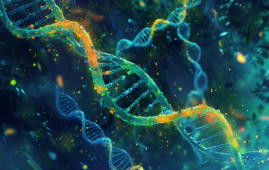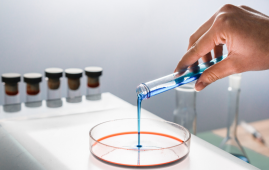

Further proof that infections in pregnant women increase the chance that their unborn children may acquire leukemia has been discovered by an international team of medical researchers. The team examined data from several Danish medical registries in their article, which was published in JAMA Network Open, in an effort to determine whether there is a connection between various infections that affect a pregnant woman and the possibility that they increase leukemia risks in baby.
Leukaemia is a form of cancer that harms blood cells and prevents them from transforming into specific types of other cells, like immune system-supporting cells.
The most common kind of cancer among children is leukemia.
Although its source is unknown, previous studies have found some correlations between infections in pregnant women and increased leukemia risks in baby. To identify these links in this current endeavor, the researchers used a novel strategy.
Accessing and analyzing medical data from various Danish medical registries was part of the endeavor. In total, scientists examined information for almost 2.2 million children in Denmark to search for incidences of infections occurring in expectant mothers and leukemia later on developing in their offspring (up to an average age of 12). In the records analyzed, 1,307 of the 4,362 children diagnosed with cancer before the age of 15 had leukemia.
Researchers discovered that leukemia risk was 35% higher than average for children born to pregnant women who had any kind of infection throughout their pregnancy. They also discovered that the kind of infection mattered. If the mother had a vaginal or urinary tract infection while pregnant, the baby’s risk of developing leukemia increased by 65% and by 142%, respectively.
The study’s researchers did not discover any links between infections in pregnant women and a higher chance that their offspring may get any other type of cancer. They propose that immune-related variables have a role in the emergence of childhood leukemia. Additionally, they point out that some leukemia cases may start in utero since, according to prior studies, lesions on the chromosomes of infants who later had leukemia may be seen when they were born.
more recommended stories
 Spatial Computing Explains How Brain Organizes Cognition
Spatial Computing Explains How Brain Organizes CognitionKey Takeaways (Quick Summary) MIT researchers.
 Gestational Diabetes Risk Identified by Blood Metabolites
Gestational Diabetes Risk Identified by Blood MetabolitesKey Takeaways (Quick Summary for Clinicians).
 Phage Therapy Study Reveals RNA-Based Infection Control
Phage Therapy Study Reveals RNA-Based Infection ControlKey Takeaways (Quick Summary) Researchers uncovered.
 Pelvic Floor Disorders: Treatable Yet Often Ignored
Pelvic Floor Disorders: Treatable Yet Often IgnoredKey Takeaways (Quick Summary) Pelvic floor.
 Urine-Based microRNA Aging Clock Predicts Biological Age
Urine-Based microRNA Aging Clock Predicts Biological AgeKey Takeaways (Quick Summary) Researchers developed.
 Circadian Control of Neutrophils in Myocardial Infarction
Circadian Control of Neutrophils in Myocardial InfarctionKey Takeaways for HCPs Neutrophil activity.
 E-Cigarette Use and Heart Attack Risk in Former Smokers
E-Cigarette Use and Heart Attack Risk in Former SmokersKey Takeaways for Clinicians and Nurses.
 36-Week Pre-eclampsia Screening May Reduce Term Risk
36-Week Pre-eclampsia Screening May Reduce Term RiskA New Preventive Strategy for Term.
 Cardiovascular Risk and Sudden Cardiac Death in Diabetes
Cardiovascular Risk and Sudden Cardiac Death in DiabetesRising Sudden Cardiac Death (SCD) Risk.
 Poor Kidney Function and Alzheimer’s Biomarkers Explained
Poor Kidney Function and Alzheimer’s Biomarkers ExplainedPoor kidney function may influence levels.

Leave a Comment